The winners of the sixth Cradle to Cradle Product Design Challenge have been announced by the Cradle to Cradle Products Innovation Institute. This is the final competition in a series of six global Challenges, which invited designers, sustainability professionals and students to re-envision and redesign products for the circular economy in accordance with the Cradle to Cradle Certified™ product standard – and, where possible, using Cradle to Cradle Certified materials.
More than 150 designers from 17 different countries worked, both independently or collaboratively in teams, to submit 92 entries for this Challenge. Of the participants, 73 percent were design and engineering students, while 27 percent are current and emerging design professionals. More than 600 designers across 30 countries submitted over 550 entries for all six challenges in the series.
The Challenges are presented by the Institute in collaboration with Autodesk and Arconic Foundation. Winners of the sixth Cradle to Cradle Product Design Challenge are:
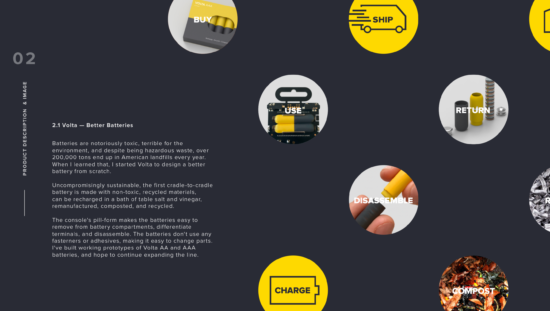
VOLTA – Best Overall Project
Koraldo Kajanaku, Interaction Designer, San Francisco
Selected for the innovative use of safe, healthy materials and design-for-disassembly approach in addressing the highly hazardous, global problem of disposable batteries, Volta employs non-toxic materials (including Cradle to Cradle Certified Ingeo Biopolymer) in a battery that can be recharged in a bath of table salt and vinegar – or remanufactured, composted and recycled. Volta’s fastener-free, pill-form design make it easy to change parts, remove components from battery casing, and disassemble for reuse and recovery.
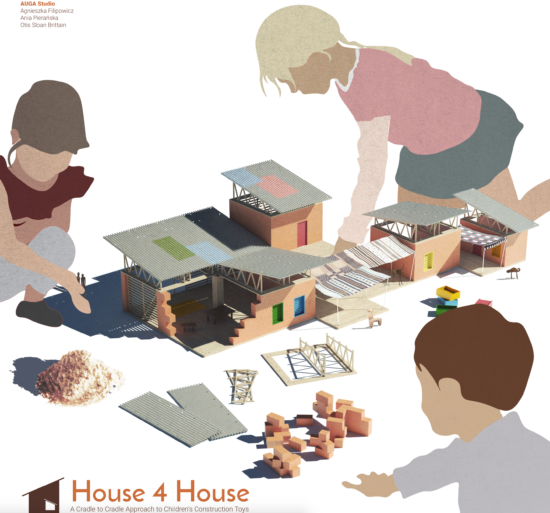
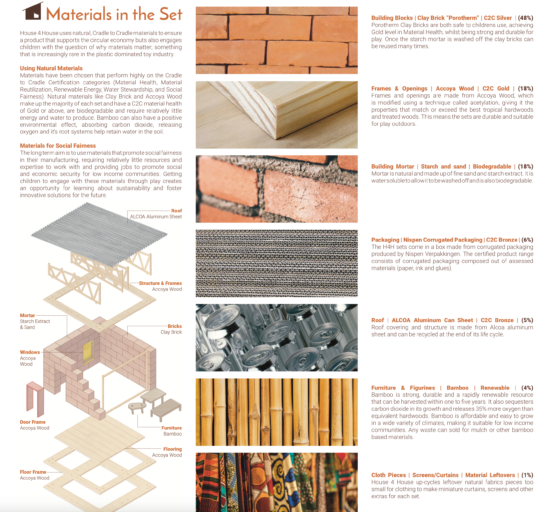
House 4 House – Best Use of Cradle to Cradle Certified Materials
Agnieszka Filipowicz, Ania Pieranska & Otis Sloan Brittain, AUGA Studio, Copenhagen
Selected for its vision and thoughtful design focused on engaging the next generation to learn circular design in buildings by doing, House 4 House’s mission is to educate children about sustainability through house building kits, which in turn help to build a real house for every toy house sold. Inspired by different ways of building from across the world, House 4 House challenges typical pitched roof doll’s house design and allows children to explore their creative potential. Made with Cradle to Cradle Certified materials, including Accoya® Wood, Alcoa Aluminum, Nispen Corrugated Packaging and Porotherm Bricks, each kit includes building supplies, characters, furniture and guides for constructing a miniature house. When it’s time for a change, the starch-based mortar is simply washed off and the materials can be used again.
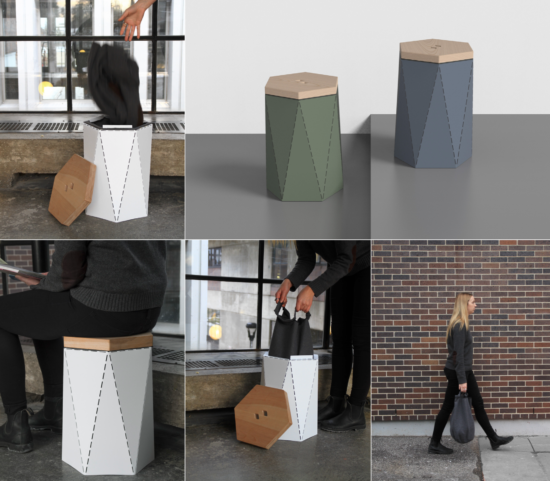
TO Stool – Best Use of Aluminum
Robert Shudra, Industrial Design Student, Carleton University, Ottawa, Canada
Selected for its elegant design and the clever use of perforated aluminum, which is shipped flat then folded into the final stool by the user (considerably reducing packaging and manufacturing energy and costs), TO Stool blends form with purposeful function. The stool aims to adjust throwaway habits by encouraging and facilitate the diversion of used textiles into circular life cycle streams. TO features a removable bag under the seat to create a dedicated area within the home for storing textiles intended for donation or recycling. Once full, the bag can be easily transported to donation facilities. At the end of the stool’s useful life, the aluminum frame can easily be disassembled and infinitely recycled, while the renewable wood base can be repurposed or composted along with the accompanying textile bag.
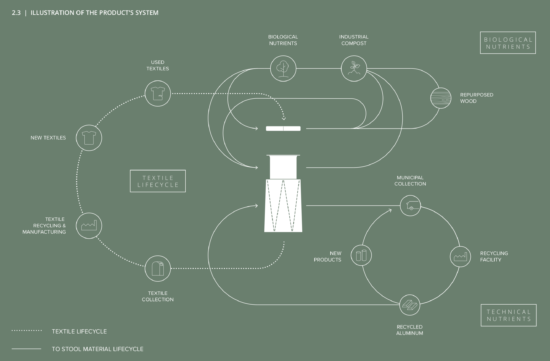
Bench32 – Best Use of Autodesk Fusion 360
Ralf Schneider, Assistant Professor, Industrial & Interaction Design, Syracuse University, New York
Chosen for its brilliant use of Fusion 360’s simulation capabilities to both ideate and render the design, Bench32 is inspired by the imperative weight reduction in airplane construction. The repetition of 32 wooden spars forms the seating surface, which is held together by 80 metal parts. Reusing parts multiple times and aligning the elements with ample negative space creates a lightweight appearance that results in an extremely sturdy yet lightweight bench comprised of FSC-certified wood or Cradle to Cradle Certified Accoya® wood.
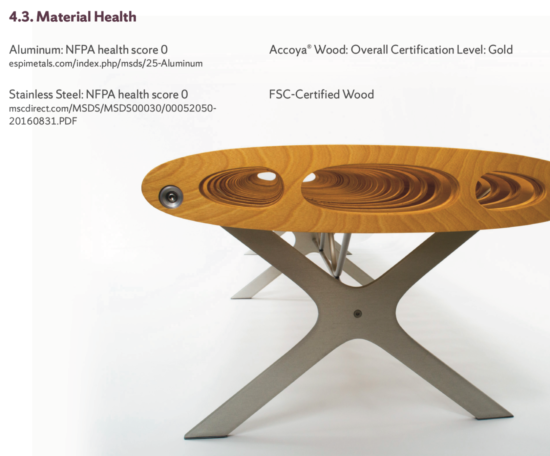
“Inspired by the methodology of the Cradle to Cradle Certified product standard, these designers have created innovative products and furnishings that demonstrate the way good design can allow for abundance, endless reuse and pleasure – eliminating the need to think in terms of waste or contamination while simultaneously propagating a Cradle to Cradle economy,” said Dr. Michael Braungart, co-founder of the Cradle to Cradle Products Innovation Institute, co-author of Cradle to Cradle and The Upcycle, and founder and scientific CEO of EPEA Internationale Umweltforschung GmbH, an international environmental research and consulting institute headquartered in Hamburg.
Designers of the winning projects will receive expert commentary and design critique from Michael Braungart to support their continued work.
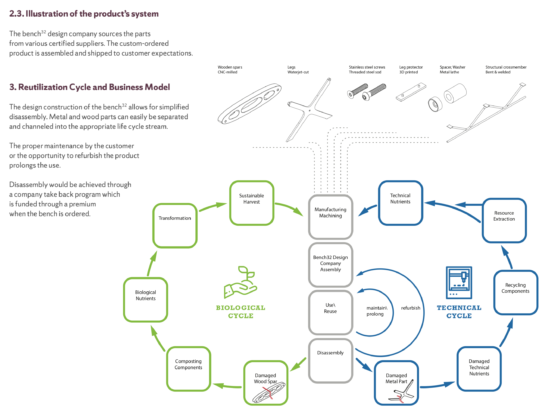
“As the trajectory of our global population, along with the volume of resources needed to sustain us, escalates, there has never been a more pivotal time to apply the Cradle to Cradle Certified product standard as a means of creating and verifying products for the growing circular economy,” said Institute President Lewis Perkins. “The designers who participated in this Challenge – and the winning projects – reflect a keen awareness of the need to employ safe, healthy materials in the innovation of products that contribute positively to an economy driven by regenerative design.”
To enter the Challenge, participants were required to complete a free two-hour online course, Designing Cradle to Cradle Certified Products for the Circular Economy, developed in collaboration with Autodesk. The course was made possible by Arconic Foundation, which is dedicated to advancing science, technology, engineering and math (STEM) education and sustainable design and manufacturing skills training worldwide, with special emphasis on engaging and creating access for underrepresented and underserved groups.




Be the first to comment